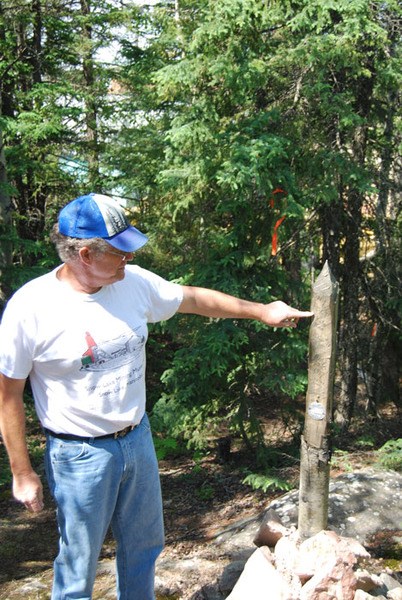Growing up in a mining town, a young person hears all, or much, of the lingo inherent to the industry. By the time the town's sons and daughters are into their teens, they have heard talk of, drilling lifters, taking a raise round, screening the back, and being screwed over by the cross-shift. But really, other than the latter, how much of it do they really understand? Like most, except maybe miners themselves; not a lot! If you've never rode a cage to earn a wage, it's like a different language and the work sites and environment contrast, significantly, to what most people would experience over their lifespan. However, mining, from discovery till the final product is hoisted to surface, is an interesting and amazing industry. One need only take a walk through the Snow Lake Mining Museum to realize the truth in those words.
The Mining Museum tells Snow Lake's story why we are here; where we came from, and what we experienced to get to where we are today. However, as Paul Hawman, chairman of the museum board, eloquently explains - most museums are about equipment, artifacts, photographs, and written history not exactly spellbinding stuff with the age 10 and under group!
Originally our museum was like most others; it did have a mining flavour, but was becoming filled with 'old stuff' that really had no rhyme or reason to it. Today, the Snow Lake Mining Museum is devoted exclusively to mining. It is now policy that they do not accept or even consider items unless they are mining industry or mining history related. In their quest to become solely a mining museum, the board is embracing another strategy to further enhance their uniqueness - interactive exhibits. "We're really looking for more hands on stuff," said Hawman while giving a tour through the museum's newest exhibit. "With all the big equipment, there was nothing really interactive. We got the gold panning display a couple years back, so kids can pan for gold. It's fairly popular, but then after that, while the adults look at things, kids wander around with nothing else to do." That is about to change.
Hawman said that he spent some time thinking about how to make things more interesting for youngsters and came up with a list of (hands-on) things they could do. Staking a claim was one of the things that he came up with. He says that he thought about it for a whole year, prior to mentioning it to Clair Pilgrim. "And he ran with it," said Hawman! "So we pretty much put it together, but we haven't had anyone go through it yet." They have, of course, gone over it and worked out any kinks and bottlenecks that could be foreseen and it is now ready for the public. It, along with a 'Rockhound' exhibit will be officially open when you read this.
In the bush back of the museum and over a newly constructed bridge fording a drainage ditch, lays the Rice 11 claim. It is so named in honour of area pioneer and prospector, Kathleen Rice. Hawman says its claim posts are actually marked with the same words that were on the posts of one of Rice's original area claims.
How the claim staking exhibit will work is simple. A child will pick up a clip board and receive instructions in the museum. They will then go out to stake their claim. After crossing the bridge and walking to the 'Directions Sign', a staker will follow an arrow from there to the #1 post. They will fill in required information then following another arrow, proceed to the #2 post. Each post faces the next and the staker continues in this fashion until they have recorded the information at all four corner post. They then return to claim post #1 and fill in the date, completion time, and the name they have given their claim. Once completed, the child returns to the museum office, files the claim with the attendant and a certificate is issued in the staker's name. Easy, interesting, and even if the child's parent is a mine worker, this is undoubtedly something industry related they will have done that their parent has not.
How the aforementioned Rockhound Exhibit will function is also straightforward. A child becomes an official 'Rockhound' by searching through the museum's massive display of rocks looking for four strategically placed, but only numbered samples of Galina, Chalcopyrite, Pyrite, and Sphalerite. Once found and identified, in a questionnaire that follows, the 'hound' must match the sample up with the metal derived from it and by signing their submission, they gain an official 'Rockhound' certificate. Without prospecting (or Rockhounding) it would be impossible to find a potential mine property and nothing mining related could be done on a piece of property until a claim is staked. Both these activities give the child an excellent feel for how a mine is found.
In addition to these two exhibits, there is the interactive gold panning exhibit, which is fun for young and old. There are also other exhibits and artifacts which display the history of all the past producing mines of the area; those that tell the stories of regional and local pioneers, and mock ups that give the layman an understanding of the working life of a miner. Hawman says that there are also plans to further enhance their change house display, with the addition of a lamp rack and a collection of 80 miner's lamps.
They also have a large and varied collection of mining specific souvenirs for folks looking for something for that hard to buy for miner or retired miner?




